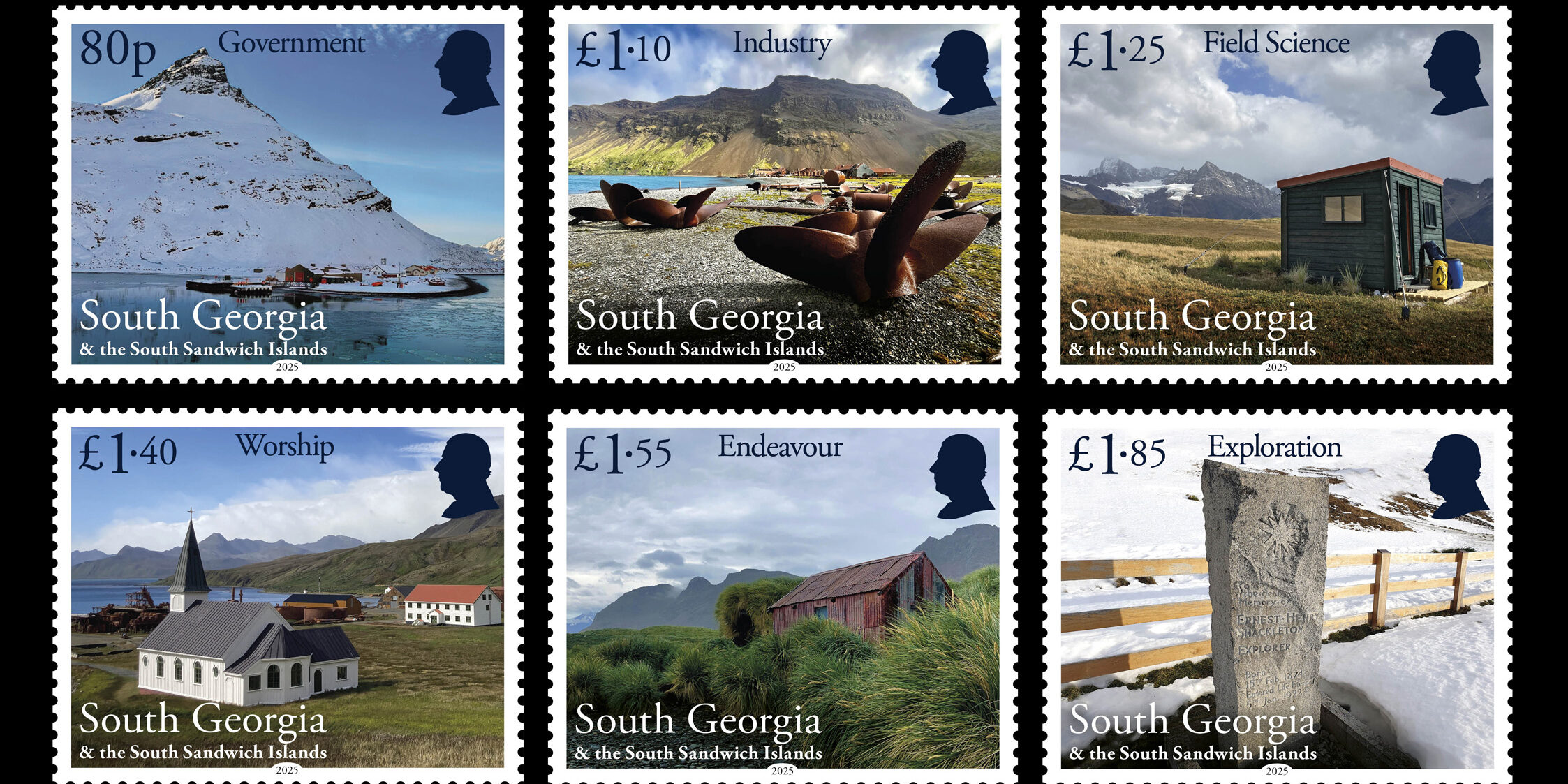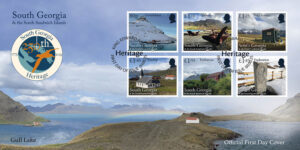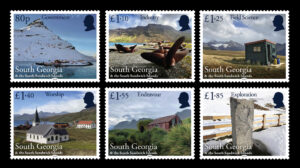South Georgia Heritage Stamp Release
November 13, 2025
Today, the Government of South Georgia & the South Sandwich Islands (GSGSSI) is delighted to release a stamp set to commemorate South Georgia Heritage.
Two-hundred and fifty years ago Captain James Cook landed at Possession Bay and took possession of the island, in the name of King George III and his heirs. In this anniversary year we celebrate South Georgia and its change from a little known and little valued island to a thriving UK Overseas Territory which is globally renowned for championing science, conservation and sustainable management. Each set of stamps will focus on a different element of South Georgia and shine a light on both its history and its future.
This fourth issue is a definitive set and focuses on heritage and how humans have engaged with the South Georgia landscape over its 250-year history.
Government
In 1775 Cook formally claimed South Georgia for Great Britain, and in 1843 the Letters Patent were issued initiating continuous British possession and government. Throughout the 19th century South Georgia was governed as a dependency of the Falkland Islands, but in 1985 the Territory became independent and the Government of South Georgia & the South Sandwich Islands was established. The main centre of Government operations is King Edward Point, where a constant Government presence is maintained and Government Officers oversee all activities from fishing to tourism.
Industry
Although wildlife and wilderness dominate South Georgia, the signs of past industry remain. In particular, the shore based whaling stations are a stark reminder of a period in the islands history that was characterised by exploitation of the natural environment. The whaling stations themselves were hubs of activity and had all the facilities needed to support the small populations and the whaling industry, with everything from the core processing facilities, mess and accommodation facilities, kitchens and gardens, and even boat building and repair yards – critical for a Southern Ocean industry. The propellors on the beach at Stromness are a reminder of this industrial past.
Field Science
As a natural laboratory that is home to vast arrays of seabirds and marine mammals, scientists flock to South Georgia to study its wildlife. Much of these data can only be gathered in the field and some of the long-term demography studies have been ongoing for more than 30 years. In modern times, technological advances mean it is increasingly possible to use remote sensing techniques to monitor wildlife, but there remains a need to ground truth data and collect physical samples to monitor diet and breeding success. The field hut on the Greene Peninsula is typical of the facilities on the island, comprising of a small cabin with two bunks and a small kitchen area.
Worship
During the whaling era, shore-based stations were self-contained in terms of industry, sustenance, recreation and spirituality. The church at Grytviken was built by Norwegian whalers in 1913 and formed a crucial part of life on station hosting many significant services, including a funeral service for Sir Ernest Shackleton. Today it is part of the Diocese of the Falkland Islands and still hosts commemorative services and the occasional wedding.
Endeavour
As a remote Atlantic Island, endeavour was needed in almost all facets of life on South Georgia. Tenacity and ingenuity were needed to overcome what elsewhere would seem like simple tasks. The hut at Jason Harbour is testament to this. Small and weatherbeaten, the hut was built in 1911 as a refuge and was used to deposit mail for the stations in Stromness Bay and provided a vital link in communication between the stations and the outside world.
Exploration
South Georgia’s most famous explorer was Sir Ernest Shackleton who is famed for his heroic crossing of the island to summon help for his stricken crew from HMS Endurance on Elephant Island. South Georgia remained close to Shackleton’s heart and at the request of his wife, he is buried in the cemetery at Grytviken. The spirit of exploration lives on, and other notable endeavours include the Combined Services Expedition of 1964/65, which not only retraced Shackleton’s footsteps in crossing the island but also made the first accent of the Islands highest peak, Mount Paget. Even today a small number of mountaineering expeditions still seek to explore the rugged and inaccessible interior of South Georgia.
The stamps are available to purchase through www.falklandstamps.com or for trade customers via www.iomstamps.com.








